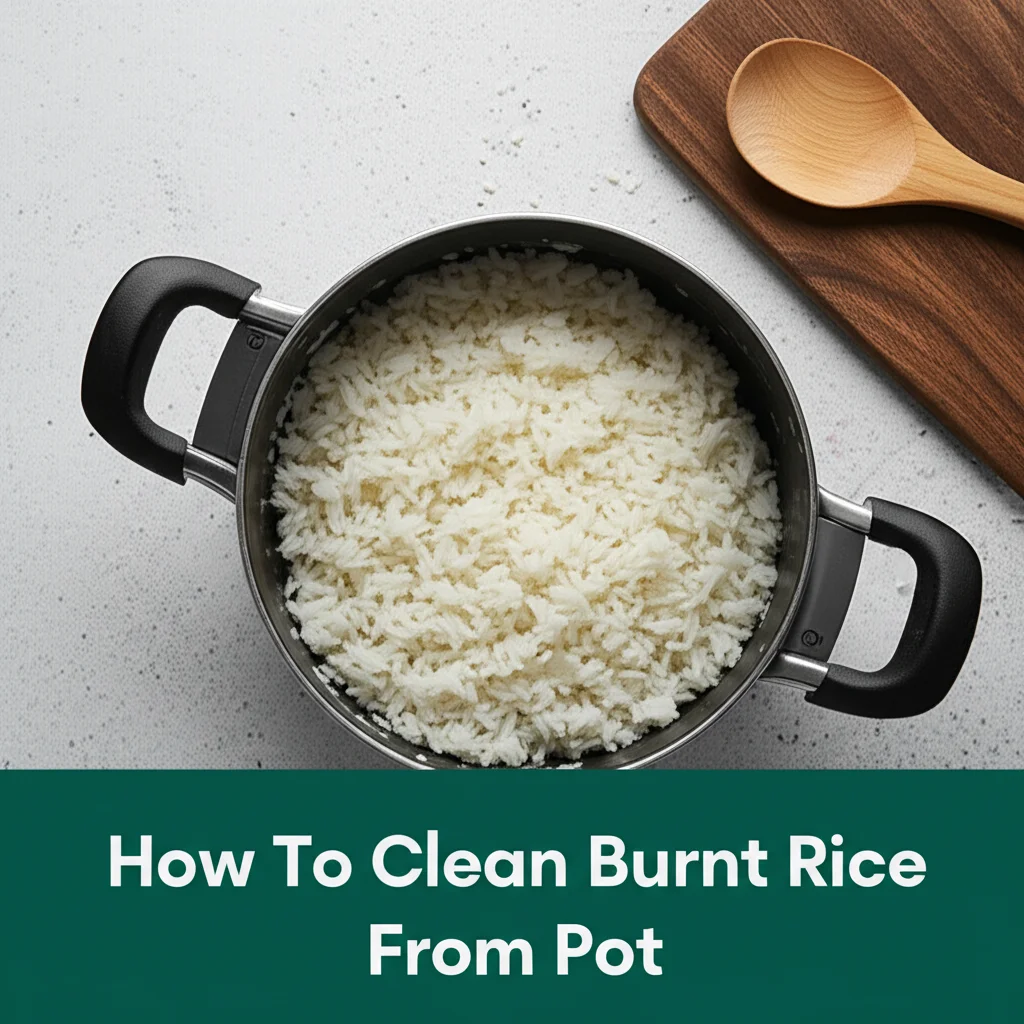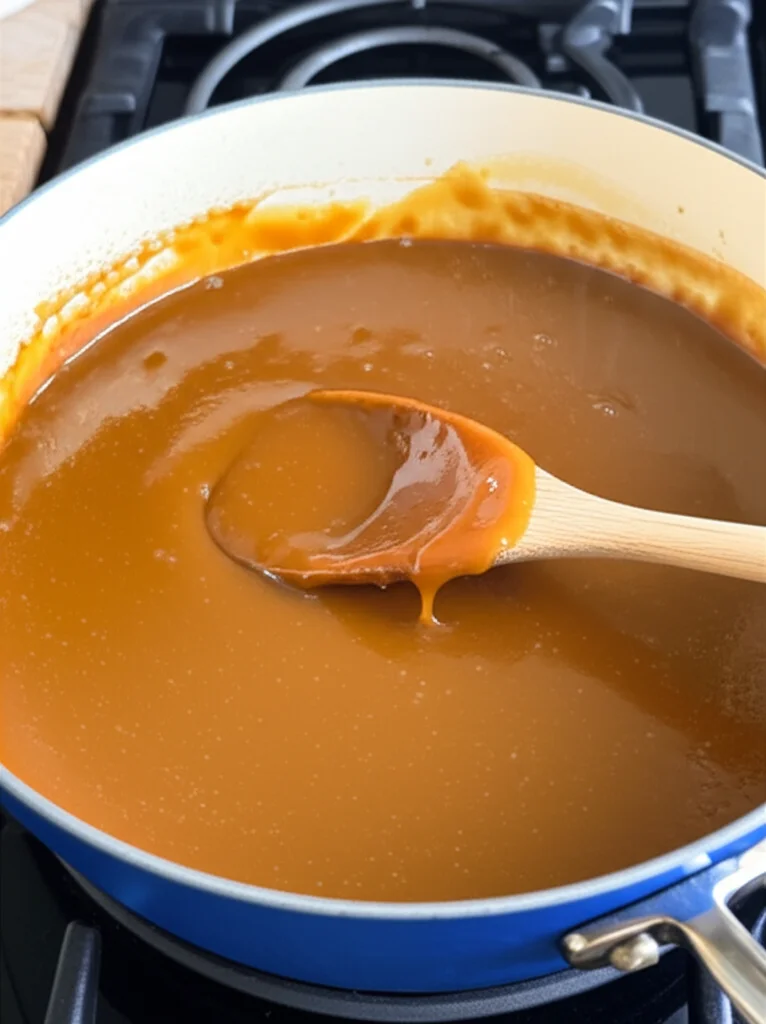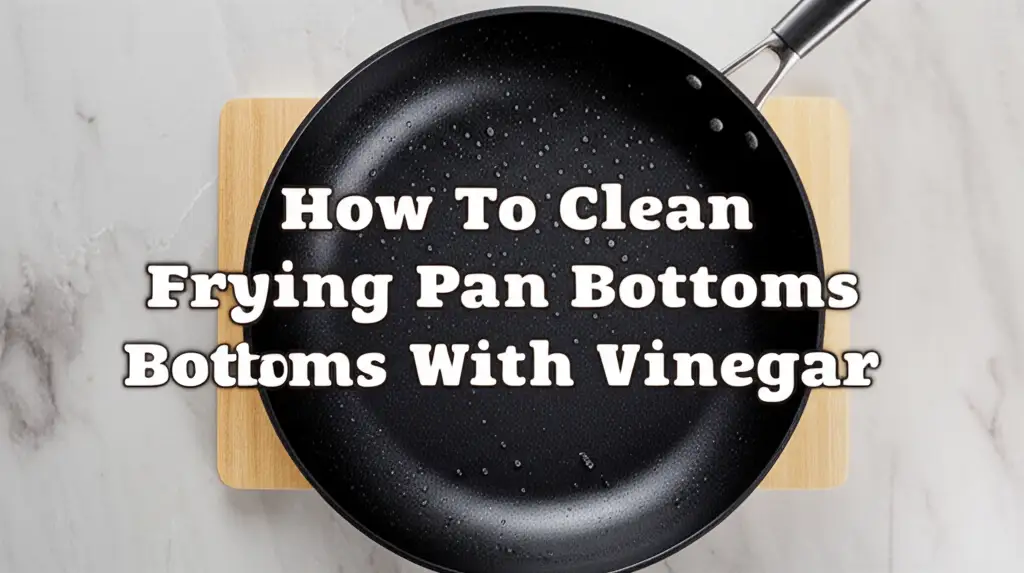· Todd Martin · Home Cleaning · 15 min read
How To Clean Burnt Rice From Pot

Effortlessly Clean Burnt Rice from Any Pot
We all have moments in the kitchen when things go awry. One common mishap is burning rice in a pot. The sticky, stubborn residue of burnt rice can seem impossible to remove. I know the frustration of finding a layer of charred rice welded to the bottom of my favorite saucepan. Do not despair. You can clean burnt rice from a pot effectively. This article provides clear, practical steps to rescue your cookware. I will guide you through various methods. You will learn about common household ingredients and powerful cleaning solutions. We also explore tips for preventing future burnt rice incidents. Let us get your pots shining again.
Takeaway
- Start by soaking the pot to loosen burnt rice.
- Use baking soda and vinegar for powerful natural cleaning.
- Boiling water with dish soap can lift less severe burns.
- Always match the cleaning method to your pot material.
- Prevention is key: Use correct water ratios and heat settings.
Concise Answer to Cleaning Burnt Rice
To effectively clean burnt rice from a pot, first cool it and soak it in warm water with a little dish soap. For stubborn burns, boil water with baking soda and vinegar in the pot, letting it sit to loosen the residue. Gently scrape with a non-abrasive tool before washing normally.
Understanding Burnt Rice and Pot Materials
Burnt rice sticks to the bottom of a pot for several reasons. It often happens when the heat is too high. It also occurs if there is not enough water. Sometimes, stirring is insufficient. The starches in the rice caramelize and then char, bonding strongly with the pot’s surface. This creates a hard, black layer. Understanding the pot material helps you choose the best cleaning approach. Different pots react differently to cleaning agents and abrasive tools.
Stainless steel pots are durable. They can handle more aggressive cleaning. This includes scrubbing pads or mild abrasives. However, too much force can scratch them. Non-stick pots need gentle care. Harsh scrubbing or metal utensils will damage the non-stick coating. This makes them unusable. Cast iron pots require specific cleaning too. They need re-seasoning after a deep clean to maintain their non-stick properties. Always identify your pot type before you begin. This helps prevent damage while removing burnt rice. I have ruined good cookware by using the wrong tools. For more general advice on cleaning stainless steel, you can read about how to clean burnt stainless steel pot and how to clean stainless steel pans burnt. Knowing your pot helps you choose the right cleaning path. This ensures you clean the pot without causing further harm.
The Soaking and Scraping Method: First Steps
The first step in cleaning burnt rice from a pot is always soaking. Do not try to scrape dry, burnt rice. This can scratch your pot. It will also be very difficult. Let the pot cool down completely. Then, fill it with warm water. Add a squirt of dish soap. Let the pot soak for at least a few hours. Overnight is even better for very tough burns. Soaking softens the burnt rice. It makes it easier to remove. The burnt residue will absorb water. This causes it to swell and lift from the surface.
After a good soak, try to scrape the loosened bits. Use a wooden spoon or a plastic scraper. Avoid metal utensils, especially on non-stick surfaces. Gently push against the burnt areas. You will see parts of the rice lift away. Drain the dirty water. Rinse the pot. This initial scraping removes the top layer of burnt residue. It prepares the pot for deeper cleaning if needed. Sometimes, this simple soaking is enough. It depends on how badly the rice burned. If the pot still has stubborn spots, move on to stronger methods. Patience during the soaking phase saves you a lot of scrubbing later.
Natural Cleaning Power: Baking Soda and Vinegar
Baking soda and vinegar are powerful cleaning agents. They are also non-toxic. This combination works wonders on burnt rice. First, sprinkle a generous layer of baking soda over the burnt area. Add enough water to form a thick paste. Let this paste sit on the burnt rice for several hours. Overnight is best for heavy burns. Baking soda is a mild abrasive. It helps lift the charred bits. The alkaline nature of baking soda also helps break down the burnt food.
After the baking soda soak, pour some white vinegar into the pot. You will see a fizzing reaction. This reaction helps loosen the burnt residue further. Place the pot on the stove. Bring the mixture to a gentle boil. Let it simmer for about 10-15 minutes. The boiling action combined with the baking soda and vinegar works to break down the burnt rice. Turn off the heat. Let the pot cool. Once cool, carefully empty the pot. Use a wooden spoon or nylon scrubber to gently scrape away the remaining burnt bits. You will find they come off much more easily. For a deeper dive into these natural cleaning solutions, refer to articles on how to clean with vinegar and baking soda and how to clean pots with baking soda. I often rely on this method myself. It has saved many of my pots. This method is effective for various burnt food residues.
Dish Soap and Water Boil Method
Sometimes, a simple boiling method works wonders for burnt rice. This technique is effective for less severe burns. It helps loosen the stuck-on food without harsh chemicals. First, ensure your pot is cool. Add about an inch or two of water to the pot. This amount covers the burnt area. Then, add a few drops of dish soap. You do not need too much soap. Just a small amount creates suds and helps with the cleaning action.
Place the pot on your stove. Bring the water and soap mixture to a boil. Let it simmer for 10-15 minutes. The boiling water creates steam and heat. This steam works to lift the burnt rice from the pot’s surface. The dish soap helps to emulsify any fats or oils present in the burnt residue. This makes the removal process easier. After simmering, remove the pot from the heat. Let it cool completely. Once cool, try scraping the burnt bits. Use a wooden spoon or a plastic scrubber. The burnt rice should come off with less effort. This method is gentle. It is safe for most pot materials. It is a good first step if the baking soda and vinegar method seems too involved. I use this trick often for lighter burnt food spills.
Salt and Lemon: Abrasive and Acidic Duo
Salt and lemon create a powerful natural cleaning team. This method combines an abrasive with an acid. It helps break down and scrape away stubborn burnt rice. This technique works well for stainless steel pots. It can also be used on cast iron. However, avoid it on non-stick surfaces, as salt can be too abrasive. Start by sprinkling a generous amount of coarse salt onto the burnt area. Use sea salt or kosher salt. These types offer good scrubbing power.
Next, squeeze the juice of half a lemon over the salt. The lemon juice provides acidity. This acid helps to break down the burnt residue. It also brightens the pot. Let the salt and lemon mixture sit for about 10-15 minutes. This allows the lemon to react with the burnt rice. After waiting, use a non-abrasive sponge or a piece of lemon rind itself to scrub the burnt spots. Apply gentle pressure. The salt acts as tiny scrubbing particles. The lemon juice helps to lift the stains. Rinse the pot thoroughly with water. If any residue remains, you can repeat the process. This method is environmentally friendly. It leaves your pot smelling fresh. I find it surprisingly effective for those tough, cooked-on stains.
Specialized Cleaning Products and Steel Wool
For extremely stubborn burnt rice, you might need stronger measures. Specialized cleaning products can help. Products like Bar Keepers Friend are very effective for stainless steel pots. These cleansers contain mild abrasives and oxalic acid. They cut through tough stains and burnt residue. Always read the product label for instructions. Test a small, inconspicuous area first. This ensures it does not damage your pot. Apply the cleaner with a damp cloth or sponge. Scrub gently. Rinse thoroughly afterward. These products are generally not for non-stick surfaces. They can damage the coating.
Steel wool or very abrasive scrubbing pads are another option. However, use them with extreme caution. They are only suitable for stainless steel pots. Never use steel wool on non-stick cookware. It will scratch and ruin the surface instantly. For stainless steel, apply a little dish soap or a specialized cleaner to the steel wool. Scrub the burnt rice in circular motions. Use firm but even pressure. The abrasive nature of the steel wool physically scrapes away the charred layer. After cleaning, wash the pot with soap and water. Dry it completely. I reserve steel wool for my most desperate cleaning situations. It is a last resort tool. It works. For other tough burnt stains, you might check guides on how to clean burnt sugar from a pan or even how to clean burnt oil from stainless steel pan. These show how tough cleaning products can be useful.
For Non-Stick Pots
Cleaning burnt rice from a non-stick pot requires extra care. Harsh abrasives will scratch the non-stick coating. This renders the pot useless. Always start with soaking. Fill the pot with warm water and dish soap. Let it soak for several hours or overnight. This softens the burnt rice. After soaking, gently try to scrape the residue. Use a wooden spoon or a plastic scraper. These tools are soft. They will not harm the coating.
If soaking and gentle scraping are not enough, try the baking soda and water boil method. Sprinkle baking soda over the burnt area. Add enough water to cover it. Bring it to a gentle simmer for 10-15 minutes. Turn off the heat and let it cool. The baking soda helps lift the burnt bits without harsh scrubbing. Avoid vinegar in boiling non-stick pots. While vinegar is safe, prolonged boiling with acids can sometimes affect delicate coatings. Once cooled, use a soft sponge or cloth to wipe away the loosened rice. Never use metal scrubbers. Never use abrasive cleaners on non-stick surfaces. This also applies to how to clean burnt non-stick baking sheet. Gentle methods preserve your non-stick cookware.
For Cast Iron Pots
Cast iron pots are durable but require specific cleaning for burnt rice. Never use harsh dish soaps or steel wool often. These can strip the seasoning. The seasoning is a baked-on layer of oil. It creates a natural non-stick surface. First, scrape off as much loose burnt rice as possible. Use a wooden or plastic scraper. Avoid metal. Next, pour a generous amount of coarse salt into the pot. Add a small amount of warm water. This creates a thick paste. Scrub the burnt areas with a stiff brush or a non-abrasive sponge. The salt acts as an abrasive. It helps lift the burnt rice.
Rinse the pot with hot water. Do not use soap unless absolutely necessary. If soap is used, you must re-season the pot. After cleaning, dry the cast iron pot immediately and thoroughly. Moisture causes rust. Finally, re-season the pot. Apply a thin layer of cooking oil (like vegetable oil or flaxseed oil) to the entire surface. Wipe off any excess. Place the pot upside down in a preheated oven (375-400°F or 190-200°C) for one hour. Let it cool in the oven. This re-seasons the pot. It protects it from rust. It restores its non-stick qualities. Proper care ensures your cast iron lasts for generations.
Preventing Burnt Rice: Tips for Next Time
Prevention is always better than cure, especially in the kitchen. Learning how to prevent burnt rice saves you time and effort. It also keeps your pots in good condition. Follow these simple tips to avoid future burnt rice incidents. I have learned these lessons over many years of cooking.
- Use the Right Water to Rice Ratio: This is crucial. For most white rice, a 1:2 ratio (1 cup rice to 2 cups water) works well. Brown rice often needs slightly more water. Always check the package instructions. Too little water means the rice will absorb all the liquid before it is fully cooked. This leads to burning.
- Use a Heavy-Bottomed Pot: Thicker bottoms distribute heat more evenly. This reduces hot spots where rice is likely to stick and burn. Thin-bottomed pots are more prone to burning.
- Do Not Overfill the Pot: Leave enough space for the rice to expand. Overfilling can lead to uneven cooking. It also causes boil-overs.
- Bring to a Boil, Then Simmer: Start rice on high heat until it comes to a rolling boil. Once boiling, immediately reduce the heat to the lowest setting. Cover the pot tightly. Let the rice cook slowly. This gentle simmering ensures even cooking without burning.
- Avoid Lifting the Lid: Resist the urge to peek or stir the rice while it cooks. Lifting the lid releases steam. Steam is essential for proper rice cooking. It keeps the rice moist. It prevents it from drying out and burning.
- Cook for the Right Time: White rice usually cooks in 18-20 minutes. Brown rice takes longer, often 40-45 minutes. Follow the recommended cooking time. After cooking, let the rice sit off the heat, covered, for 5-10 minutes. This allows residual steam to finish the cooking. It also helps the grains separate.
- Consider a Rice Cooker: A rice cooker is an excellent investment if you frequently cook rice. These appliances are designed to cook rice perfectly. They regulate temperature and cooking time. They prevent burning automatically.
- Check Doneness Carefully: Before serving, gently fluff the rice with a fork. Check for any sticking at the bottom. If it feels stuck, you can add a tablespoon or two of hot water. Cover the pot again. Let it sit for a few more minutes. This can sometimes prevent full burning.
By following these prevention tips, you can enjoy perfectly cooked rice every time. You will keep your pots clean. These steps save you the trouble of scrubbing burnt rice.
FAQ Section
Q1: Can burnt rice damage my pot permanently?
No, burnt rice usually does not cause permanent damage to your pot. It leaves behind a stubborn layer of char. With the right cleaning methods, you can remove it. However, improper cleaning, like harsh scrubbing on non-stick surfaces, can cause permanent damage. Always use appropriate tools and cleaning agents for your pot material.
Q2: Is it safe to eat rice that has burnt in the pot?
The burnt, charred parts of the rice are generally not safe to eat. They can contain unhealthy compounds. Scrape away the burnt bits carefully. The unburnt rice above the charred layer is usually fine to consume. Ensure you remove all the burnt sections before serving.
Q3: How do I remove burnt rice from a non-stick pot?
Remove burnt rice from a non-stick pot by first cooling and soaking it with dish soap and water. Then, gently scrape with a wooden or plastic utensil. For stubborn spots, boil water with baking soda in the pot, then let it cool. Always avoid abrasive scrubbers or harsh chemicals.
Q4: What if the burnt rice smell lingers in my kitchen?
To remove lingering burnt rice smell, open windows for ventilation. Simmer a pot of water with lemon slices, cinnamon sticks, or white vinegar on the stove. Place bowls of white vinegar or activated charcoal around the kitchen to absorb odors. Clean all surfaces thoroughly.
Q5: Can I use a dishwasher for pots with burnt rice?
A dishwasher alone cannot effectively clean burnt rice from a pot. The high heat can bake the residue on even harder. It also may not provide enough scrubbing power. You must pre-treat the pot using one of the methods mentioned in this article before placing it in the dishwasher.
Q6: How long should I soak a pot with burnt rice?
For light burns, soak the pot for at least 30 minutes to an hour. For moderate to severe burnt rice, an overnight soak (8-12 hours) is best. The longer soaking time allows the burnt residue to soften significantly. This makes removal much easier.
Conclusion
Cleaning burnt rice from a pot can seem like a daunting task. However, with the right approach, it is entirely manageable. I have found success using common household ingredients. From the gentle power of dish soap and water to the robust cleaning of baking soda and vinegar, you have several effective methods at your disposal. Remember to identify your pot material first. This ensures you choose a method that cleans without causing damage.
I encourage you to try these techniques. Do not let burnt rice ruin your cookware. Embrace these cleaning hacks. You can restore your pots to their former glory. More importantly, practice prevention. Using proper cooking techniques helps avoid burnt rice in the first place. You will save yourself a lot of scrubbing. Enjoy perfectly cooked rice and sparkling clean pots every time you cook. You are now equipped to handle this common kitchen challenge with confidence.




